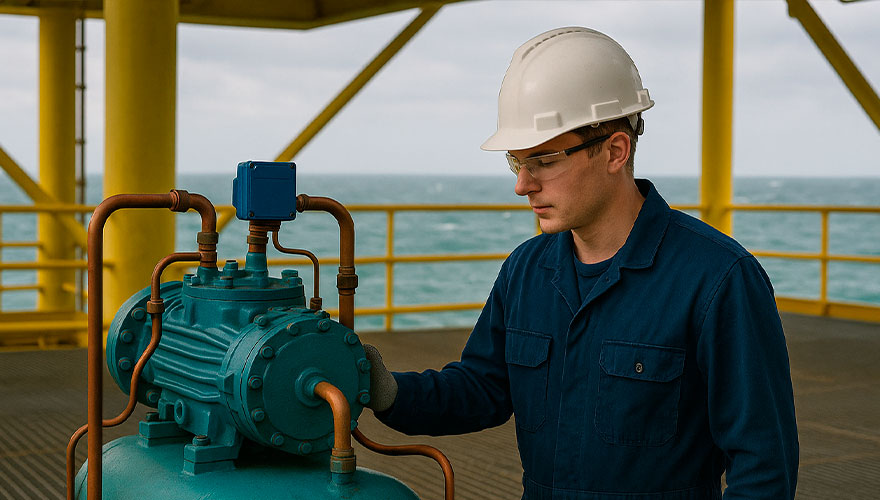
How refrigerant choice affects the environment, performance, and compliance of your operation
In the offshore sector, where operations take place in sensitive and high-risk environments, environmental responsibility goes far beyond mere lip service. One of the most critical—and often overlooked—aspects is the choice of refrigerant used in HVAC-R systems.
With increasingly stringent international regulations and pressure for sustainable solutions, the use of low GWP (Global Warming Potential) refrigerants has become a key point of compliance, safety and efficiency.
SeaChiller is at the forefront of this transition, offering complete solutions adapted to MARPOL, ABRAVA, ANVISA, IBAMA and international standards such as the Montreal Protocol and the Kigali Agreement.
What is GWP and why does it matter?
GWP (Global Warming Potential) is an index that measures how much a gas contributes to the greenhouse effect compared to CO₂. The higher the GWP, the greater the environmental impact.
Why change your coolant now?
- Compliance with national and international environmental standards
- Avoids fines and environmental embargoes for the use of controlled substances
- Improves operational safety (some refrigerants are toxic or flammable)
- Increases the energy efficiency of the HVAC system
- Enhances your operation in audits and certifications by ISO, IBAMA, MARPOL, ABNT, etc.
Regulations applicable in the offshore sector
ABRAVA – recommends transition to fluids with GWP < 750
MARPOL (Annex VI) – prohibits the use of substances that deplete the ozone layer on vessels
Kigali Agreement – Brazil is a signatory and has targets to reduce HFCs
SeaChiller Solutions: Safe and Technical Refrigerant Replacement
SeaChiller performs:
• Diagnostics of the current system and refrigerant
• Component compatibility analysis with new fluids
• System conversion with upgrades to seals, valves, and compressors
• Complete fluid replacement, testing, and reconfiguration
• Technical report delivery, emissions analysis, and compliance
Examples of refrigerants we work with:
• MO99
• R-450A
• R-1234yf
• R-407H (in transition)
• CO₂ and NH₃ for specific applications (with containment)
Real Case – Transition from R-22 to MO99 on a Platform
Client: Floating Drilling Unit
Challenge: HVAC system operating with R-22, creating environmental risks and reduced performance
SeaChiller Solution:
Complete conversion to MO 99
Upgrade of seals and expansion valves
Recalibration of temperature controls
New panel with pressure and temperature readings
Result:
• Zero controlled emissions
• Full compliance with MARPOL and ABNT standards
• ISO 14001 certification facilitated
✅ Advantages of transitioning to low GWP refrigerants
- 🌱 Proven environmental sustainability
- 🔒 Greater operational safety
- ⚙️ Better compatibility with new equipment
- 📈 Improved thermal performance
- 📃 Compliance with environmental audits
📞 Want to upgrade your system to sustainable refrigerants?
SeaChiller offers free diagnostics and a personalized technical proposal to replace your refrigerant safely and efficiently.
